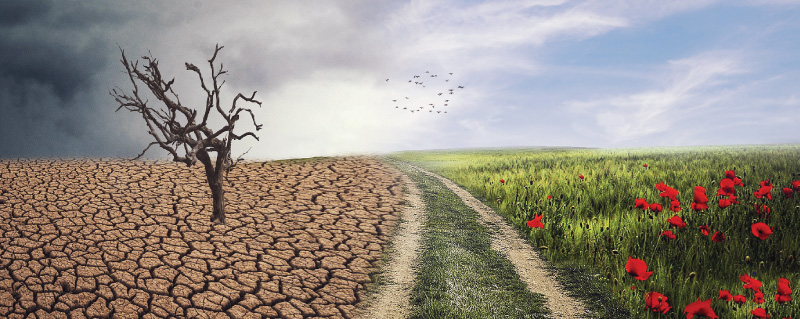The physics and chemistry of climate change have been around for more than a 100 years. The intergovernmental panel on climate change (IPCC), who was established in 1988 on the basis of what the scientists were saying, published the very first assessment report in 1990. That was followed by five further rounds of assessment reports and the sixth assessment report was published in 2022. Prof Stephanie Midgley from the Western Cape department of agriculture recently presented a look at how climate change is impacting the deciduous fruit industry, at the Hortgro technical symposium.
“The science has established that climate change is happening. It’s not something for the future. The evidence is there and we need to act on it. Twenty five years ago, people could be excused for not knowing or doing much about climate change. Today, we have no excuse,” says Prof Stephanie Midgley.
According to Prof Midgley, scientists have been measuring what climate change would look like with and without human interference. Multi century warm periods have happened before in global history. The last time we saw these kinds of levels was more than a 100 000 years ago, and that was the last interglacial period which was between 100 and 120 000 years ago.
We are now reaching a very dangerous level that has not been seen since human civilisation emerged. Globally this means that surface temperature has been increased by 1,1 °C from 1850 to 1900. Over land, the temperature rose even more with 1,6 °C, with South Africa being one of the places with the highest rise in temperatures.
Data for Southern Africa shows that warming is twice the global average at this point. Research shows a strong link between human activity and natural disasters in the past 10 years. An example of this is the floods in KwaZulu-Natal at the beginning of 2022 where it was established that, because of human activity leading to climate change, the possibility of that happening went up with 50%.
“Just the hydrological and meteorological conditions are twice as probable. If we look at other phenomena, the heat wave that India and Pakistan have experienced from March to May 2022, has been found to be 60 times more probable because of climate change,” says Prof Midgley.
Looking at the future, she said that it is almost impossible to make any predictions. But she did say that because of what is currently happening, it shows that temperatures will rise between 1,5 °C and 4 °C. With strict intervention it can be contained to 2 °C.
“With two degrees global warming, the warming in South Africa would be between two and a half and three degrees more. And the more fossil fuels we burn, the more warming we get, obviously. Overall rainfall is predicted to increase in many parts of the world and the globe as a whole is going to get warmer and wetter. But there are certain areas and particularly some of the subtropical areas like the Mediterranean that are projected in almost all the models to be getting drier. That means that these areas in Southern Africa are expected to see decreased rainfall. By the middle of the century we can expect twice as much bad droughts as before,” says Prof Midgley.
Showing a number of research slides that was specifically done for the deciduous fruit industry, she emphasised that temperature increases over the next 25 years to 2050 will see increases of temperature for the western Cape of between 2,2 °C (coastal) to 2,6 °C in inland areas. When it comes to days conducive to colour development in red apples during March and April, Prof Modgley said that it shows that there will be sharp decrease in the number of days that will be right to start the colour development in the fruit. Currently there is between 18 and 30 days that can be used to develop colour, in the immediate future those days will go down to 3 to 9 days.
When looking at rain fall for the Western Cape, models show that rainfall will decrease and that the real damaging impact will be felt from approximately 2040. Moderate drought can become more frequent, from one in ten years to two in ten years and getting more frequent as the situation deteriorates, to where there will be five or six years of continuous drought.
Some of the immediate impacts will be an increase in daily temperatures and increase in evaporation that will mean more frequent irrigation. This will mean higher water demand, so water availability and irrigation strategies will become critical.
So what does that all mean and where do we go from here? It means that humans are really controlling the globe, by what we are doing to the globe.
“We have transitions in terms of land, soil, soil health, water use genetic transitions, what are we planting, emerging regenerative agriculture and others where we can increase productivity, just by using our resources more carefully. Then we have infrastructure transitions. We know the problems with road and rail, but we need those things to function if we want to be adaptive,” says Prof Modgley.
Many of the solutions are opportunity, they are co-benefits for human wellbeing, for sustainable development and environmental health. Not all of these things are just going to be a drain on resources. They are going to make things better.
“If we act now we have to do it together. We can’t do it on our own and together means partnerships with government, industry, farmers and researchers. We need to have a shared vision of where we are going and what that future must imply. And I think it’s really important to say that everything everybody does every year matters. Every action matters and it all needs to happen together across the world to get to the essence,” Prof Modgley says.

